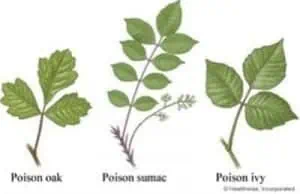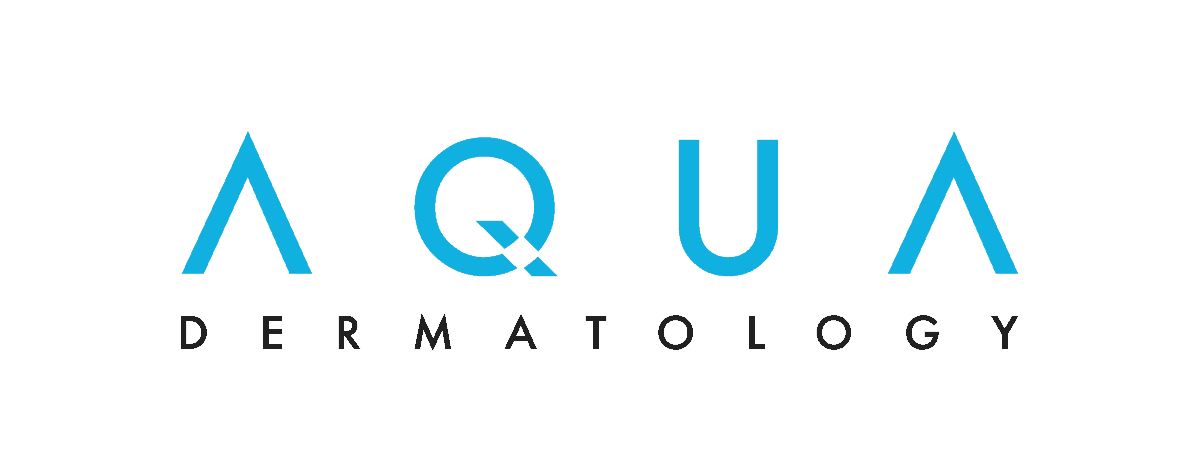Poison Ivy,
Oak & Sumac
Call (877) 900-3223
POISON IVY, OAK, & SUMAC:
POISONOUS PLANT RASHES
Ways of Getting Poisonous Plant Rashes
Symptoms of Poisonous Plant Rashes
What to Do for Poisonous Plant Rashes
How to Recognize Poison Ivy, Poison Oak, and Poison Sumac
Preventing Allergic Reactions
Florida’s beautiful foliage is really something special. There are so many great things to see in nature, but some of them are not meant to be enjoyed up-close. Poisonous plants definitely fall into this category. One tiny drop of urushiol, the toxic oil in poison ivy, oak, and sumac, is enough to cause a red, itchy, uncomfortable rash on your skin. The more contact your skin has with urushiol, the more severe your reaction.
Generally, these kinds of rashes can be treated at home with over-the-counter topicals, but more serious cases need the assistance of a dermatologist, so if you consider your condition to be unbearable or you experience troubling swelling, schedule an appointment with a Water’s Edge Dermatology practitioner.
Ways of Getting Poisonous Plant Rashes
- Direct Contact: Touching a plant that contains urushiol
- Indirect Contact: Urushiol can stick to almost anything. Touching a pet’s fur, a gardening tool, or sports equipment that contains urushiol can cause the rash.
- Airborne Contact: Burning poisonous plants releases particles of urushiol into the air. These airborne particles can land on the skin.
The rash is not contagious, so anyone who helps apply cream, for example, is not at risk, unless the urushiol is still on your skin. That’s unlikely because your skin absorbs the oil in a matter of minutes. However, if someone touches clothing or another item that still has the oil on it, they could suffer a reaction. This is more likely because the oil can hang around for quite some time.
People who spend a lot of time outdoors are more at risk, including:
- Landscapers
- Forest firefighters and forestry workers
- Electrical linemen
- People who install fences
- Maintenance workers in parks, gardens, and nurseries
- Hikers, campers, rafters, kayakers, and fishermen
Symptoms of Poisonous Plant Rashes
Normal symptoms:
- Itchy skin where the plant touched you
- Red streaks or general redness where the plant brushed against your skin
- Small bumps or larger raised areas
- Blisters filled with fluid that may leak out
Serious symptoms:
- Swelling of the face, mouth, neck, genitals, or eyelids, which may prevent the eyes from opening
- Widespread, large blisters that ooze large amounts of fluid
- Blood-filled blisters that may become black and shiny
- Infection can develop, especially with excessive scratching
The first time you get urushiol on your skin, it may take a week for a rash to appear, but any subsequent run-ins will trigger rashes more quickly, in some cases within a few hours.
Any skin that came into contact with the oil is at risk for the rash. The rash may seem to be spreading, but all that means is that it’s still developing from earlier contact or you’ve touched something that still has urushiol on it.
What to Do for Poisonous Plant Rashes
There’s wide variation in the duration of a rash. If you can act quickly after exposure, you can actually reduce the severity or may avoid an outbreak altogether.
If you think you may have come into contact with poison ivy, oak, or sumac, immediately wash areas of the skin that may have touched the plant. You could also try using Tecnu® or Zanfel®, two topicals that are designed to remove the oil from your skin.
Urushiol can remain active for a long time, so be sure to thoroughly launder all clothing and everything else that might be contaminated.
If you break out in a rash, you’ll want to seek relief with antihistamine pills, calamine or aloe vera lotion, or cold compresses. Soaking the area in cool water may also be soothing. Never use hot water, as that will open up the pores and allow more oil to seep into your skin. For all the naturalists out there, try these:
- Cucumber slices directly on the affected skin
- Apple cider vinegar soaked in a brown paper bag
- Baking soda paste
- Witch hazel
- Oatmeal bath
- Rubbing alcohol – apply immediately after exposure to prevent the oil from penetrating your skin
- Juice from a lemon – apply immediately after exposure
If you have a moderate to severe rash, visit Water’s Edge Dermatology. One of our practitioners may prescribe corticosteroid creams, ointments, gels, or shots.
How to Recognize Poison Ivy, Poison Oak, and Poison Sumac
The saying, “Leaves of three, beware of me,” can help identify poison ivy and oak, but a more accurate saying is “leaflets of three, beware of me.”
Each leaf on poison ivy and poison oak has three smaller leaflets. The middle leaflet has a longer stalk than the two on the sides. In the spring, poison ivy develops yellow-green flowers.
Poison sumac can be identified by its row of hairless, paired leaflets that contains an additional leaflet at the end. Each stem has seven to nine leaves.
Often the leaves of these plants have spots that resemble blotches of black enamel paint. These spots are made up of urushiol, which turn brownish black when exposed to air. Before urushiol is exposed to the air, it is colorless or pale yellow.
Come early fall, the leaves on some of these poisonous plants turn yellow or red. The fruit of mature plants often turns off-white.

Poison Ivy by Region
Poison ivy grows as a vine in the East, Midwest, and South. In the far northern and western United States, Canada, and around the Great Lakes, it grows as a shrub.
Poison Oak by Region
In the West, poison oak may grow as a vine, but it’s usually a shrub. In the East, it grows as a shrub.
Poison Sumac by Region
Poison sumac grows into a small tree. It’s thankfully not very common since it only grows in wet areas. You’ll find it in peat bogs in the Northeast and Midwest and in swampy areas in parts of the Southeast.
Preventing Allergic Reactions
Avoiding toxic plants is the best thing you can do. Other recommendations include:
- Wear long pants, long sleeves, boots, and gloves when it’s not possible to avoid these plants.
- Apply an over-the-counter skin-barrier product that contains bentoquatam before going outdoors. Bentoquatam helps prevent urushiol from penetrating the skin.





